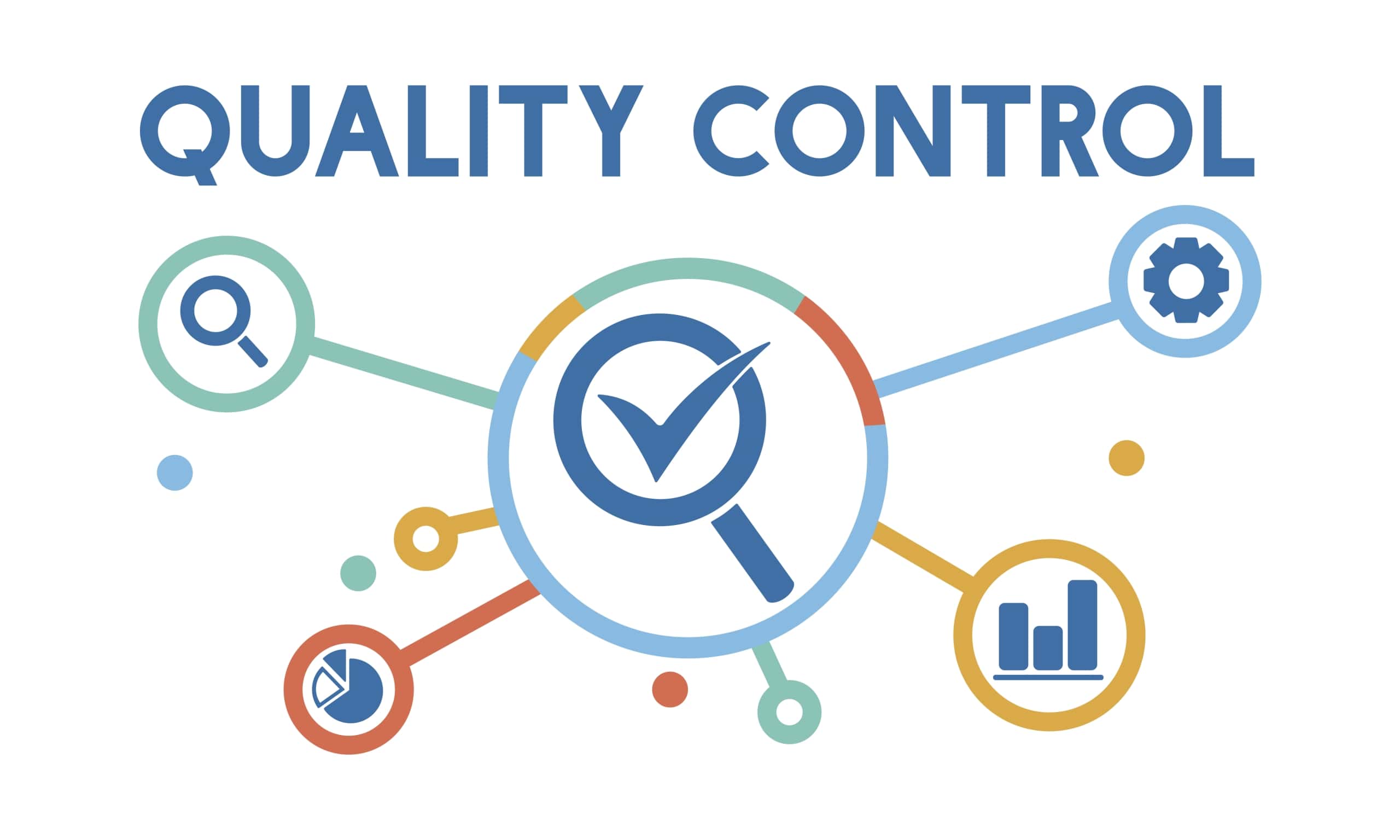Precision and Consistency
Automation provides an unparalleled degree of accuracy and uniformity to the production process of wet wipes. Human error is unavoidable in conventional manual procedures, resulting in product differences. Nevertheless, using automated systems, every step of the wet wipes manufacturing process is carefully regulated by sophisticated robots and sensors. These technologies guarantee that each wipe manufactured complies with precise criteria, ensuring consistency in dimensions, thickness, and moisture level. Accurate accuracy is essential to satisfy strict industry regulations and fulfill customer demands.
Automated cutting machines are designed to precisely cut each moist wipe, so removing any differences that may arise from hand cutting. Automated dispensing systems regulate the precise quantity of liquid distributed onto each wipe, guaranteeing uniform moisture levels. Attaining such a high degree of control is challenging when relying on manual procedures, since even little variations may lead to the production of goods that fail to fulfill quality criteria.
Furthermore, automated systems can make modifications in real-time. If a sensor detects a departure from the established parameters, the system can promptly rectify the problem without interrupting the manufacturing line. The capacity to make immediate changes not only improves product uniformity but also reduces waste. Malfunctioning items are promptly recognized and corrected, hence decreasing the probability of a batch being abandoned owing to quality concerns.
Brand reputation is also heavily dependent on consistency. Consumers anticipate consistent excellence in every purchase. Automated systems provide the consistent delivery of products to the market, ensuring that they all meet the same exceptional quality standards. This fosters confidence and loyalty among consumers. To summarize, the use of automation in the production process of wet wipes results in improved product quality, less waste, and increased customer satisfaction due to its accuracy and uniformity.
Real-Time Monitoring and Feedback
An important benefit of automation in the production of wet wipes is the capacity to monitor and receive feedback in real-time. Automated systems are outfitted with sophisticated sensors and data analytics tools that constantly monitor several facets of the manufacturing process. These systems monitor essential variables such as temperature, pressure, humidity, and the uniformity of the solution used on the wipes. Automated systems can rapidly discover any abnormalities or deviations from the predefined norms by consistently monitoring these elements.
Real-time monitoring enables prompt corrective measures, guaranteeing that any possible problems are resolved before their ability to affect the ultimate quality of the product. For example, if the moisture level in a batch of wet wipes deviates from the specified range, the system may automatically modify the solution dispensing mechanism to reestablish the appropriate equilibrium. This prompt reaction not only preserves the quality of the present batch but also avoids the recurrence of similar problems in future production cycles.
In addition, real-time feedback loops are essential for maintaining the most favorable production circumstances. The data gathered by sensors is promptly evaluated and shown on displays for convenient access by operators and supervisors. These displays may have intricate charts and graphs that depict the current state of several factors, facilitating rapid decision-making. Operators are immediately notified in the event of an unforeseen problem, enabling prompt intervention and appropriate modifications.
The advantages of real-time monitoring go beyond instant quality control. The data produced by these systems is very helpful for optimizing and enhancing long-term processes. Wet wipes manufacturers can examine past data to recognize recurring patterns and trends, discovering valuable information that may result in the implementation of more effective manufacturing methods. This iterative improvement cycle guarantees that the production process grows and adjusts to uphold elevated standards of quality and efficiency.
Real-time monitoring and feedback systems not only improve product quality but also have the potential to greatly decrease downtime and operating expenses. Automated solutions reduce the need for manual inspections and interventions by promptly detecting and resolving errors, therefore optimizing the wet wipes manufacturing process. As a result, there is an increase in productivity, a decrease in expenses, and ultimately, a stronger competitive position in the market.
In summary, real-time monitoring and feedback systems are essential elements of contemporary wet wipes production. They provide the essential resources to maintain rigorous quality control, enhance wet wipes manufacturing processes, and guarantee that every product adheres to the highest standards of excellence.
Enhanced Contamination Control
When producing wet wipes, it is crucial to prioritize maintaining high standards of cleanliness and preventing contamination. This is particularly important for items that are used for sensitive purposes such as infant care, medical usage, and personal hygiene. Automation greatly improves contamination control by minimizing human involvement in the production process, hence lowering the risk of product contamination. The reduction of human contact points is crucial since every instance of manual handling presents a potential source of contamination.
Automated systems function inside strictly regulated settings, often equipped with clean rooms and HEPA filters to maintain aseptic conditions. These settings are specifically engineered to minimize the presence of pollutants such as dust, bacteria, and other particles. Robotic arms and automated technology execute duties such as cutting, folding, and packing wet wipes, guaranteeing that these procedures are carried out with accuracy and hygiene that human workers may find difficult to regularly do.
In addition, automated systems may have integrated sterilizing procedures that further improve contamination management. UV-C light sterilization and antimicrobial coatings may be included in the wet wipes manufacturing process, such as on equipment surfaces. These procedures effectively decrease the amount of microorganisms and hinder the development of hazardous bacteria and viruses on both the wet wipes and the equipment. This proactive strategy for controlling contamination guarantees that the end product is safe for consumer use, especially in situations that demand the utmost standards of cleanliness.
Another crucial element of improved contamination control via automation is the meticulous and uninterrupted monitoring of environmental variables. Automated systems are outfitted with sensors that continuously assess elements such as air quality, humidity, and temperature inside the manufacturing facility. These sensors identify any deviations from the ideal parameters and activate prompt correction measures to maintain a contamination-free environment. The capacity to continuously monitor and quickly respond is crucial to avoid incidences of contamination and guarantee the safety of the product.
Furthermore, automated systems may be configured to adhere to rigorous rules for the cleaning and maintenance of equipment. Regularly scheduled and automated cleaning cycles guarantee the consistent sanitization of equipment, eliminating the need for human intervention and further minimizing the danger of contamination. Automated systems may also monitor and record these cleaning activities, creating thorough documentation for regulatory compliance and quality assurance.
To summarize, automation in the manufacture of wet wipes is crucial for improving contamination control. Automated solutions provide a high degree of cleanliness and safety that is difficult to attain via manual techniques by reducing human involvement, maintaining controlled conditions, integrating sterilizing procedures, and assuring continuous monitoring. This results in a more secure and superior product, which is crucial for maintaining customer confidence and adhering to rigorous regulatory requirements.
Improved Traceability and Data Management
The use of automation in the production process of wet wipes significantly improves the capacity to track and manage data. This is essential for guaranteeing the quality of the product, complying with regulations, and continuously enhancing the manufacturing process. Automated technologies methodically document and monitor every stage of the production process, generating a complete digital record that traces each batch from the initial raw material to the final product. This degree of traceability offers a multitude of advantages for producers, merchants, and customers alike.
Automated traceability systems use sophisticated technology like RFID (Radio-Frequency Identification) tags, barcodes, and IoT (Internet of Things) sensors to collect comprehensive data at every step of manufacturing. These technologies allow wet wipes manufacturers to monitor the movement of wet wpes raw materials in the supply chain, guaranteeing that only inputs of high quality are utilized in the wet wipes manufacturing process. This comprehensive monitoring process extends throughout the whole production, packaging, and distribution stages, ensuring a thorough record of every batch of wet wipes.
Enhanced traceability offers the key benefit of promptly identifying and resolving quality problems. If a fault or contamination occurs, wet wipes manufacturers can quickly identify the origin of the issue, whether it is a specific batch of wet wipes raw material or a particular step in the wet wipes manufacturing process. This efficient identification process enables specific recalls, therefore reducing the effect on customers and safeguarding the brand’s image. Moreover, by comprehending the underlying reason for the problem, wet wipes manufacturers might use remedial measures to avert future instances.
Improved data management skills are crucial for ensuring regulatory compliance. Automated systems provide comprehensive records that detail adherence to industry norms and laws. This paperwork is crucial for audits and inspections as it serves as proof that the manufacturer complies with the necessary quality and safety procedures. Furthermore, these records promote openness and accountability, which are becoming increasingly crucial in the current regulatory landscape.
Moreover, the information gathered by automated systems might be used for ongoing improvement endeavors. Wet wipes manufacturers can examine past data to detect recurring patterns, trends, and opportunities for improvement. Data analytics may uncover inefficiencies in the manufacturing process, provide possibilities to save waste, and suggest possible enhancements in product composition. Manufacturers may improve product quality, boost productivity, and lower costs by constantly improving their operations with data-driven insights.
Automated data management solutions provide enhanced decision-making across all organizational levels. Real-time data dashboards provide managers and operators with current information on production indicators, enabling them to make well-informed choices and intervene promptly. For example, if a certain machine is functioning at a level below its maximum efficiency, real-time data might trigger timely maintenance or modifications, therefore averting possible quality problems and reducing the amount of time the equipment is not operational.
Enhanced traceability and data management not only provide internal advantages but also contribute to increased consumer confidence and pleasure. Consumers are progressively seeking information about the provenance and safety of the items they buy. Automated systems assist producers in offering comprehensive details on their goods, including aspects such as sourcing and manufacturing procedures. This kind of openness enhances consumer trust and commitment, as it guarantees the quality and safety of the wet wipes they use.
To summarize, automation greatly enhances traceability and data management in the manufacture of wet wipes. Automated solutions facilitate rapid detection and resolution of quality problems, assure adherence to regulations, promote ongoing improvement, and bolster customer confidence by offering a comprehensive digital account of the whole wet wipes manufacturing process. These advantages jointly enhance the quality of the product, improve operational efficiency, and strengthen the competitive position in the market.
Reduced Waste and Increased Efficiency
The use of automation in the production process of wet wipes plays a crucial role in minimizing waste and enhancing productivity, effectively resolving environmental issues and cost-efficiency. Automated systems enhance manufacturing efficiency by maximizing resource use and simplifying production processes, resulting in the creation of high-quality goods more sustainably and cost-effectively.
Automation significantly minimizes waste by implementing meticulous control and monitoring of the wet wipes production process. Automated systems are outfitted with sophisticated sensors and control mechanisms that guarantee precise quantities of wet wipes raw materials and solutions are used in every batch of wet wipes. Automated dispensing systems carefully control the amount of liquid delivered to each wipe, ensuring that it is neither too saturated nor insufficiently administered. By using accuracy, the probability of producing faulty items is minimized, resulting in a decrease in the quantity of rejected goods and waste.
Furthermore, automation allows for immediate modifications to be made throughout the wet wipes manufacturing process. If the system detects any deviations or abnormalities, it may automatically rectify them, ensuring consistent quality and minimizing the need for rework. This feature not only improves the quality of the output but also guarantees optimal use of resources, hence reducing waste resulting from mistakes and discrepancies.
A further crucial element in waste reduction is the improvement of the wet wipes manufacturing process. Automated systems are specifically engineered to function smoothly with minimum periods of inactivity, guaranteeing an uninterrupted and effective manufacturing procedure. Seamless productivity is accomplished by using functions like predictive maintenance and automated quality control inspections. Predictive maintenance uses data analytics to forecast equipment malfunctions and arrange timely repair, so averting unforeseen breakdowns and the resulting production interruptions. Consequently, machines function at their highest level of effectiveness, and the likelihood of resources being squandered owing to unexpected periods of inactivity is greatly reduced.
Automation facilitates the optimal use of packaging materials. Automated packaging machines are set to use exact quantities of wrapping materials, hence minimizing excessive usage and waste. Moreover, these machines include the ability to rapidly adjust to various package sizes and formats, hence improving flexibility and efficiency in addressing a wide range of market needs. This flexibility decreases the need for surplus inventories of packaging materials, hence enhancing waste reduction.
Automation enhances productivity by optimizing many stages of the manufacturing process, including tasks such as wet wipes raw material management and final product packing. Automated systems can do repetitive and labor-intensive operations with greater speed and precision compared to human workers, resulting in increased throughput and productivity. Robotic arms can execute activities like folding, cutting, and stacking wet wipes with exceptional speed and accuracy, resulting in a substantial increase in production rates.
Moreover, automation facilitates more efficient distribution of resources. By delegating ordinary jobs to machines, human workers may dedicate their attention to more intricate and strategic operations, such as optimizing processes and implementing quality improvement efforts. This optimal use of human resources improves overall productivity and operational efficiency.
The data analytics capabilities of automated systems are essential for enhancing efficiency. Wet wipes manufacturers can detect bottlenecks and inefficiencies in the manufacturing process by consistently gathering and evaluating production data. By using a data-driven approach, it becomes possible to make specific enhancements and streamline processes, resulting in a more effective allocation of time, labor, and resources.
Automation not only improves operational efficiency but also boosts energy efficiency. Automated systems are specifically engineered to function with maximum energy efficiency, hence minimizing the environmental impact of the production process. Integrating energy-efficient motors, lighting, and temperature control systems into automated buildings helps reduce energy consumption and expenses.
To summarize, the use of automation in the production process of wet wipes results in notable waste reduction and notable efficiency improvement. Automated systems provide a sustainable and cost-effective alternative for generating high-quality wet wipes by effectively managing resources, making real-time modifications, streamlining operations, and using data analytics. These technological developments not only provide wet wipes manufacturers with cost savings and increased production but also promote environmental sustainability by reducing waste and energy consumption.
Customization and Flexibility
Automation in wet wipes manufacturing introduces a remarkable level of customization and flexibility to the production process, allowing wet wipes manufacturers to meet diversified consumer demands and promptly adapt to market changes. In an industry where trends and preferences are subject to rapid change, this adaptability is indispensable, as consumers place an increasing emphasis on personalized products.
The simplicity with which production parameters can be adjusted is one of the primary advantages of automation. Programmable logic controllers (PLCs) and sophisticated software are utilized to develop automated systems that facilitate rapid and precise modifications to the manufacturing process. For example, the size, viscosity, and moisture content of wet wipes can be readily modified to create various product variants. This adaptability enables wet wipes manufacturers to develop products that are specifically designed to meet the requirements of a particular demographic, including hypoallergenic wipes for individuals with sensitive skin, disinfectant wipes for medical applications, and eco-friendly wipes that are composed of biodegradable materials.
Furthermore, automation enables the introduction of new product features and formulations without causing substantial disruptions to the production line. Wet wipes manufacturers can experiment with a variety of compounds, including fragrances, moisturizers, and antimicrobial agents, and seamlessly incorporate them into the production process. Developing specialized products, such as wipes infused with natural extracts for hygiene or alcohol-based wipes for sanitization, is particularly advantageous with this capability. Wet wipes manufacturers can remain abreast of market trends and appeal to niche segments by introducing new product variants swiftly and efficiently.
Additionally, automated systems are capable of managing small-quantity production with the same level of efficiency as large-scale manufacturing. This is essential for satisfying the needs of products that are both personalized and limited-edition. For instance, a wet wipes manufacturer may develop custom packaging for various retailers or produce a unique line of wet wipes for a particular event or promotion. These special quantities can be produced efficiently and cost-effectively by programming automated machinery to transition between various production settings with minimal delay.
Packaging options are also subject to the adaptability of automated systems. Various packaging formats, including volume packets and single-use containers, can be accommodated by automated packaging devices. This adaptability enables wet wipes manufacturers to provide a diverse selection of packaging solutions, thereby increasing the product’s appeal to a variety of consumer demographics. For example, travel-sized cases and family-sized containers can be manufactured to accommodate both household requirements and on-the-go convenience.
Automation also facilitates the rapid scaling of production to accommodate fluctuating demand. In a manual setup, the process of increasing production capacity typically necessitates the acquisition of additional apparatus and labor, which can be both time-consuming and expensive. Nevertheless, automated systems can be rapidly expanded or contracted by modifying operational schedules and production parameters. This scalability guarantees that wet wipes manufacturers can promptly address surges in demand, such as those that occur during seasonal sales or public health emergencies, without sacrificing the quality or efficiency of production.
Additionally, the real-time monitoring and remote control of the production process are made possible by the integration of automated systems with digital platforms. Wet wipes manufacturers can access and modify production settings from any location, thereby enhancing operational flexibility. This capability is especially advantageous for global operations, which necessitate the coordination and adaptation of production facilities to local market conditions in various regions.
In summary, the manufacturing of wet wipes is considerably improved by automation, which also increases flexibility and customization. Automated systems enable wet wipes manufacturers to meet diverse consumer demands and adapt to market changes efficiently by enabling quick adjustments to production parameters, facilitating the introduction of new product features, supporting small batch production, and providing versatile packaging options. This adaptability not only enhances customer satisfaction but also grants a competitive advantage in a dynamic industry.
Predictive Maintenance and Reduced Downtime
Predictive maintenance is a transformative aspect of automation in the manufacturing of wet wipes, substantially contributing to improved operational efficiency and reduced downtime. Predictive maintenance systems can prevent equipment malfunctions from occurring by utilizing sophisticated technologies such as data analytics, IoT (Internet of Things) sensors, and machine learning. This ensures that production processes are uninterrupted and seamless.
Traditional maintenance methods frequently depend on reactive measures or scheduled maintenance procedures, which are implemented only after a malfunction has occurred. These methods can be inefficient and costly, resulting in unexpected downtimes that disrupt production and increase operational expenses. In contrast, predictive maintenance continuously monitors the condition of machinery by utilizing real-time data collected from sensors embedded in manufacturing equipment. These sensors monitor a variety of parameters, including temperature, pressure, vibration, and lubrication levels, to offer a comprehensive assessment of the condition of the equipment.
The predictive maintenance system notifies maintenance teams when the data suggests that a component is at risk of failure or requires servicing, allowing them to proactively resolve the issue. This early detection and intervention prevent minor issues from escalating into significant problems that could halt production. For instance, a sensor may indicate potential bearing wear if it detects abnormal vibrations in a motor. Maintenance can be scheduled to replace the bearing before it completely fails, thereby preventing an unplanned closure.
The implementation of predictive maintenance leads to substantial decreases in delay. Wet wipes machines are operational for shorter periods because maintenance activities are organized according to the actual condition of the equipment, rather than predetermined schedules. This optimized maintenance strategy guarantees that equipment is serviced only when it is required, thereby reducing the frequency of maintenance interventions and extending the lifecycle of components. Consequently, production lines can operate more consistently and efficiently, ensuring that output objectives are met without any unforeseen interruptions.
Additionally, predictive maintenance enhances resource management. The urgency and significance of the alerts generated by the predictive system can be used by maintenance personnel to prioritize tasks. This prioritization guarantees that critical issues are promptly resolved, while less imperative duties can be scheduled at opportune times, thereby minimizing the production process’s disruption. Furthermore, predictive maintenance facilitates the optimization of spare parts inventory. Manufacturers can reduce storage costs and guarantee that essential components are always accessible by predicting which components are likely to fail and when.
The capacity to enhance the overall efficacy of equipment (OEE) is another significant advantage of predictive maintenance. OEE is a metric that evaluates the extent to which manufacturing equipment operates at its maximum capacity, taking into consideration factors such as quality, performance, and availability. Predictive maintenance directly improves OEE by reducing unexpected failures and guaranteeing that machines are operating at their maximum efficiency. Increased productivity, improved product quality, and reduced production costs are all correlated with higher OEE.
Additionally, the data acquired through predictive maintenance systems offers valuable insights for ongoing enhancement. This data can be analyzed by wet wipes manufacturers to identify recurring issues, the underlying causes of equipment defects, and areas for process optimization. These insights facilitate strategic investments in apparatus enhancements or process modifications that improve reliability and efficiency, as well as informed decision-making.
Predictive maintenance enhances safety in the manufacturing environment in addition to its operational advantages. The risk of accidents and injuries caused by malfunctioning machinery is substantially diminished by proactively addressing potential equipment failures. This proactive maintenance strategy guarantees a secure work environment for employees, thereby promoting compliance with safety regulations and fostering a positive work environment.
In summary, predictive maintenance is an essential element of automation in the production of wet wipes, providing significant advantages in the form of increased safety, better resource management, improved efficiency, reduced outages, and enhanced equipment efficacy. Predictive maintenance guarantees the efficient and cost-effective delivery of high-quality products by identifying and addressing maintenance requirements before they develop into failures.








